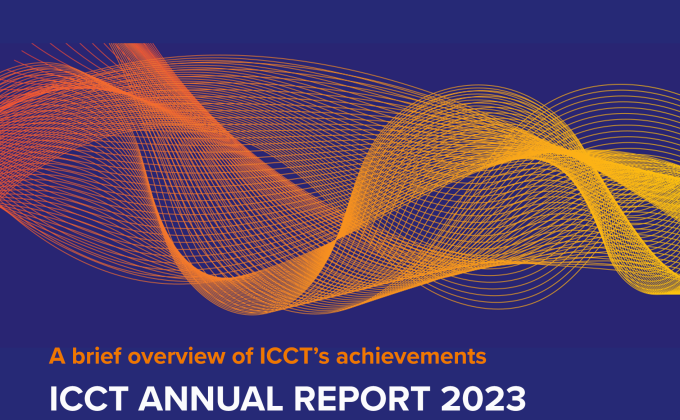Introduction
In Syria and Iraq, the general consensus is that Islamic State (IS) has been militarily defeated, but the terror group is now popping up elsewhere and breathing new life into its global caliphate. In an April 29 video, ISIS leader Abu Bakr al-Baghdadi mentioned that pledges of allegiance from the Khorasan region had been received, without going into detail. Later, after a fight against security forces in the Kashmir region in India in May this year, militants announced the establishment of an IS chapter, the so-called “Hind Province" or IS-Hind. To what extent this group’s formation was linked to Baghdadi’s claims, is unclear. In fact, little is known about this group, but its formation should not be ignored, as it has the potential to evolve to be a group with fatal impact in the subcontinent. This Perspective presents what IS-Hind may entail based on the existing characteristics of IS and militant groups in the region.
Key characteristics
One surprising aspect was the apparent need for establishing this new chapter. After all, IS already created a chapter that covered part of South Asia. That existing chapter, known as Khorasan, covered the Afghanistan-Pakistan region, and is commonly abbreviated as IS-KP. This chapter was announced on 26 January 2015 by ISIS’ public relations official in Syria. Ever since it came into existence, many militants active in the Pakistan-Afghanistan theatre have switched their allegiance to become members of IS-KP, including Pakistani Taliban fighters, sectarian militants, and pan-Islamists. Because some anti-India militants already had a presence in the areas covered by IS-KP, it is interesting to question why IS saw the need for a second chapter in the region instead of expanding or focusing on IS-KP.
According to IS’s own information, part of Pakistan falls under the chapter of Khorasan, which also covers Afghanistan. In theory, the Hind chapter would cover the region to the east—including India, but also surpassing it, covering the entire Indian subcontinent. This includes Sri Lanka, where the group’s involvement in an attack on Easter Sunday in April 2019 has been debated; Myanmar, where the exodus of Muslim Rohingyas has not only invited international condemnation but also militant vengeance; and Bangladesh.
On the basis of this, it can be argued that while it is not clear what regional groups (or group members) make up IS Hind, in theory, it has the capability to attract those individuals who support a more anti-India or subcontinent-specific agenda within the broader pan-Islamist ideology. IS announced the new group by the name of Hind in response to an attack in Indian Kashmir. For those eager to focus on and fight it out in Afghanistan, the logical alternative would be IS-KP.
Thus, for instance, militants in anti-India groups, such as Jaish-e-Muhammad and even Lashkar-e-Tayyaba—who share some ideological similarities with IS, and who have carried out attacks in Indian Kashmir (LeT in particular espouses an ideology which resembles partly that of ISIS’s Salafi ideology)—must decide whether they too want to sign on with IS-Hind or not. Pakistan has often been blamed for not taking decisive action against these groups or their top leadership. Pakistan denies the allegation, saying it has been targeting those that aim to conduct attacks across the border.
In Kashmir, where a majority of the inhabitants are Muslim, separatists have been fighting an armed struggle against the government for decades. The fighters want an independent Kashmir or to join Pakistan, India’s arch-rival. According to some reports, individuals who have now become associated with IS-Hind were previously affiliated with anti-India groups in Indian Kashmir. Those militants who want to fight it out on their own terms, rather than being seen as someone’s proxy, will have more interest in joining IS-Hind—depending, of course, on how strongly it entrenches itself. This means that should IS-Hind consolidate its position, it can create a dangerous situation in South Asia, where any action of provocation has the tendency of putting the two nuclear-armed states at alert.
Even if the group is unable to garner more widespread support, just one attack can be devastating. IS’s various chapters have carried out some of the deadliest attacks in Afghanistan and Pakistan, reminiscent of what the group did in the Middle East. Its attacks invite commentaries on just how deadly they have been, even in comparison to other terrorist groups operating in these countries. In Afghanistan and Pakistan, IS-KP has attacked Sufi shrines, visited by common people; a wedding reception; Chinese citizens; and gatherings of lawyers. Efforts should be made to ensure that the group does not carry out attacks of a similar scale elsewhere.
Most importantly, IS in general is known for targeting religious minorities; this trait is similarly reflected in its various chapters. The targets are just as often sectarian minorities like Shias, as they are non-Muslims. In fact, IS-KP is known for attracting the most virulent anti-Shia militants and groups in the region. India is a diverse country, so is the entire region of South Asia. This group wants to create wedge in that diversity, widening any fault lines.
This group needs to be confronted early on. Governments across the world have already taken serious efforts to confront IS across the globe and in the Af-Pak region. US drones have repeatedly shelled ISKP targets in Afghanistan. Pakistan too has spoken of taking action against this group, with government member stating, "there is a zero tolerance for Daesh in Pakistan. Even Daesh's shadow will not be allowed in Pakistan". Quite clearly, no country in the region can tolerate its presence.
Conclusion
While IS-Hind’s strength is often discounted at this point of time, any single incident involving the group can have far-reaching consequences. That should be borne in mind. As tweeted by Rita Katz, director of SITE Intel Group: “Of course, the establishment of a “province” in a region where it has nothing resembling actual governance is absurd, but it should not be written off…The world may roll its eyes at these developments (I sure have), but to jihadists in these vulnerable regions, [these] are significant gestures to help lay the groundwork in rebuilding the map of the ISIS' ‘Caliphate’.” As such, the establishment of IS-Hind is an important symbolic act that should not be underestimated.









